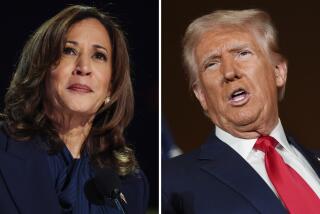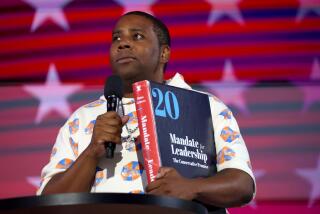New Capital Gains Plan Still Faces Uphill Fight
- Share via
WASHINGTON — House Ways and Means Committee Chairman Dan Rostenkowski (D-Ill.), faced with a slim majority of committee members who favor cutting capital gains tax rates, plans to offer a new proposal to House Democrats today aimed at defusing the revolt.
But Rostenkowski’s face-saving plan, which would exclude from taxation that portion of investment profits attributable to inflation, still faces an uphill fight among the six Democrats who have joined with all 13 Republicans on the tax-writing committee to support a capital gains cut, congressional aides said.
“I’m not optimistic,” Rostenkowski told reporters after meeting with dissident Democrats.
It was also unclear whether a majority of Democrats in the full House would back his plan, which one wavering capital gains supporter described as “innovative.”
Rostenkowski met with the so-called gang of six Tuesday afternoon, but he did not immediately press any of the dissident Democrats to change their minds.
President Bush, who originally proposed cutting the capital gains tax rate to 15% from the current 28%, has expressed a willingness to compromise with congressional Democrats, but the White House is continuing to insist on some rate cut in addition to inflation indexing. Administration aides said Bush has made no commitment to Rostenkowski’s plan for capital gains--the profits on investments in stocks, bonds and other assets.
Future Inflation
“We’re still looking for a rate cut,” said one Administration official. “Just because we’ve moved from our own 5-yard-line to their 30-yard line, some guys are willing to go for the field goal rather than the touchdown. But that doesn’t mean indexing alone is enough.”
According to sources, Rostenkowski’s latest proposal is called a “minimum basis” plan and includes a retroactive inflation adjustment. That would allow investors who sell an asset to subtract some past inflation from their gain as well as future inflation.
Previously, House Democratic leaders had said that they would only support indexing against future inflation.
The effect of retroactive indexing, which would be limited to a certain number of years, could be similar to a rate cut. For instance, allowing investors to ignore the roughly 20% inflation of the last five years would be the same as cutting the tax rate by one-fifth.
The dissident plan proposed by Rep. Ed Jenkins (D-Ga.) and backed by the Administration would allow investors to exclude 30% of capital gains from taxation through the end of 1991.
For most investors, Jenkins’ plan would mean that the tax rate on capital gains would be cut to 20% until 1992. It then would return capital gains taxation to current rates while adjusting profits on investments for inflation.
The Jenkins’ proposal, by encouraging investors to sell their assets early to take advantage of the temporarily lower rate, has the added advantage of generating additional federal revenue over the next two years. Congress could use the funds to help reduce the budget deficit.
Full Caucus
Republicans contend that taxing capital gains at a lower rate would encourage risk-taking and spur economic growth, but most Democrats deride the idea as an unnecessary giveaway to the wealthy.
House Democrats will meet in a full caucus this morning to discuss their position on capital gains, catastrophic health care and other controversial legislation under consideration.
It remained unclear Tuesday whether Rostenkowski can find any common ground on the complex capital gains issue among the various factions on his committee and in the full House. Although he has presented an alternative plan aimed at raising revenue without a cut in capital gains rates, Rostenkowski lacks the votes to push it through committee.
As a result of the impasse on the Ways and Means Committee, Rostenkowski has delayed a final vote on the $5.3-billion tax bill in hopes that he can forge a compromise.
More to Read
Get the L.A. Times Politics newsletter
Deeply reported insights into legislation, politics and policy from Sacramento, Washington and beyond. In your inbox twice per week.
You may occasionally receive promotional content from the Los Angeles Times.










